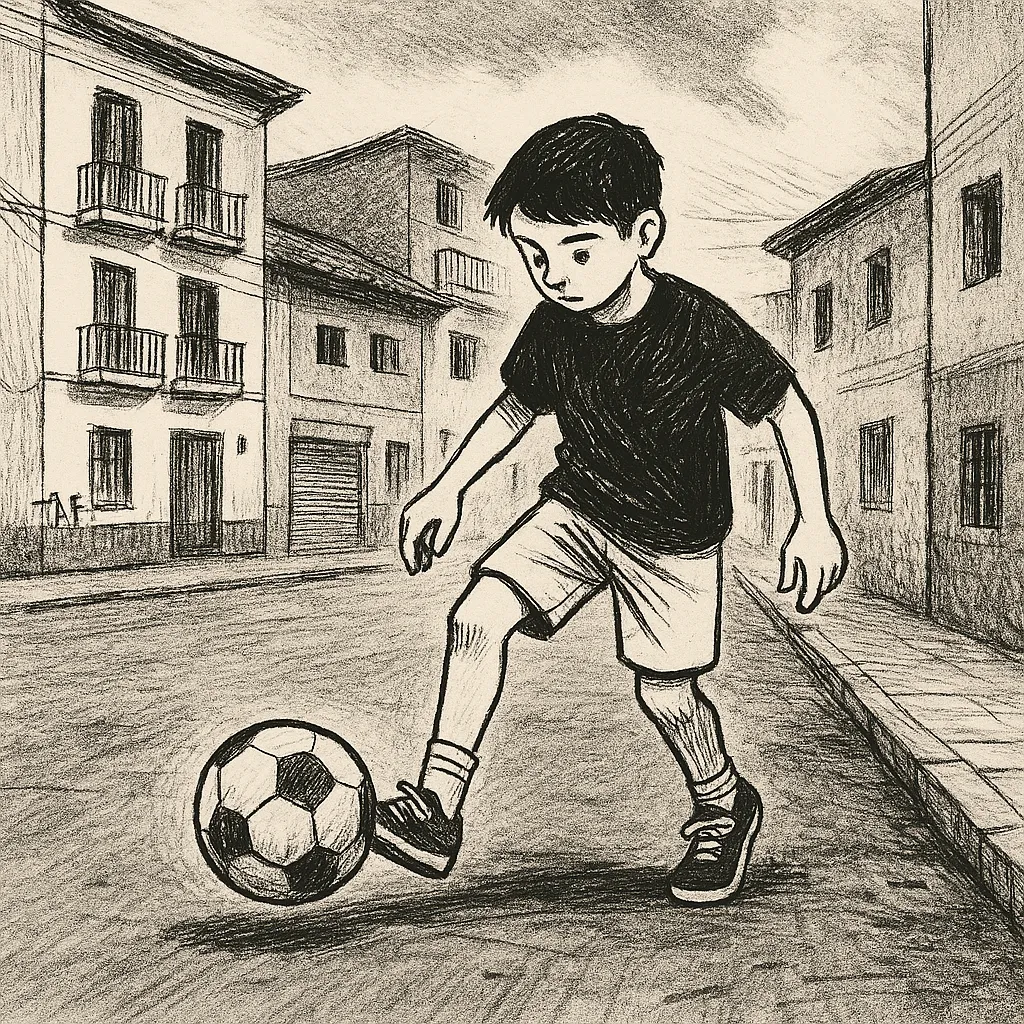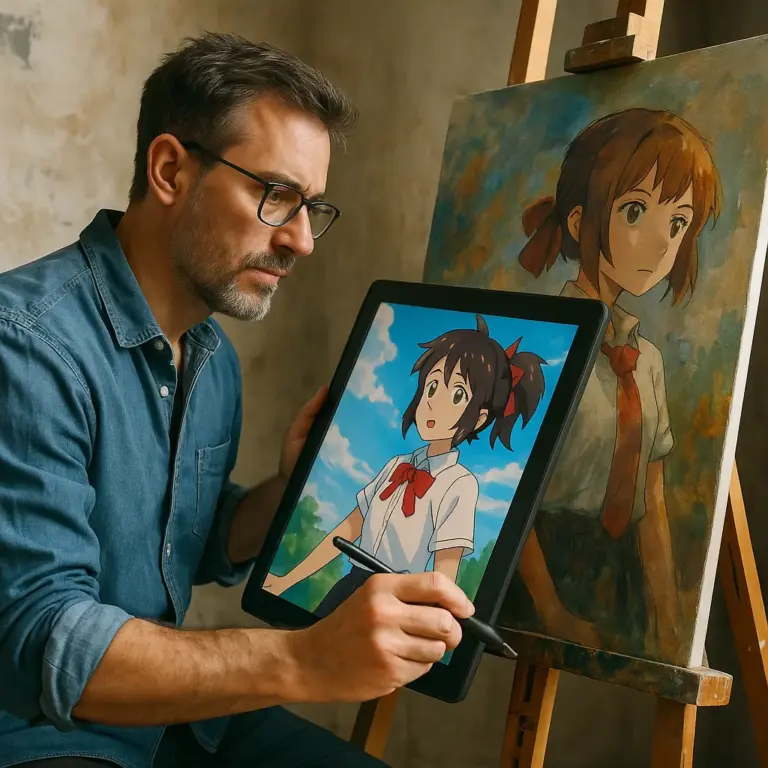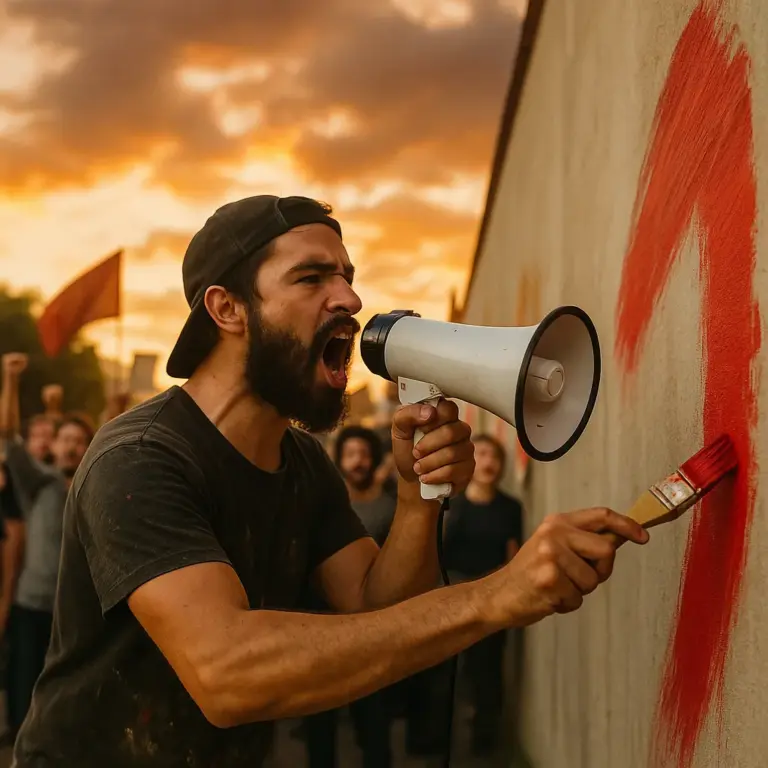Few indie games manage to capture the spirit of a place and time with as much sensitivity as despelote. A 2025 IGF finalist in both the Nuovo and Grand Prize categories, the game invites players to explore the streets of Quito, Ecuador, in 2001 — just before the country’s historic qualification for its first World Cup. All through the eyes — and dribbles — of an eight-year-old child. More than a game about soccer, it’s about everything that surrounds it: memories, sounds, voices, and landscapes that tell the story of a people at a delicate moment in history.
A Game Born from Longing and Lived Experience
The creator behind this project is Julián Cordero, lead designer and developer of despelote. Alongside Sebastián Valbuena (art and music), Gabe Cuzzillo (production), and Ian Berman (sound design), Julián crafted a layered and emotionally resonant experience. A graduate of NYU Game Center, he started the project as his thesis — six years ago. Since then, the game has grown with support from various partners while staying true to its original goal: to revisit childhood soccer.
The idea came from Julián’s own contrast of leaving Ecuador — where he played in parks and streets — and moving to New York, where he grew distant from the sport. despelote emerged from that absence and the desire to represent a version of soccer that big titles like FIFA never portray: real-life soccer, played between friends, with worn-out balls and everyday backdrops.
Soccer Without Stadiums — but Full of Life
Instead of focusing on competitive sports, despelote centers around the world that surrounds it. Players control a child walking through Quito, kicking a ball, and interacting with people, places, and everyday situations. There are no scoreboards, no teams, no roaring crowds — just life. The year is 2001, and Ecuador, still recovering from a major economic crisis, places its hopes in the national team. That tension — and shared dream — fills the atmosphere.
Julián’s own memory of that time is hazy. So the team turned to friends and family to reconstruct dialogues. The voice lines weren’t scripted but improvised by people who lived through the era and recalled their experiences through suggested scenarios. For example, a picnic conversation between a couple is based on a real relationship — and as a child, you can kick your ball right into their juice. Yes, chaos is part of the charm.
The Ball as the Heart of the Experience
The central gameplay mechanic in despelote is the ball. Simple and imperfect, it’s always front and center. Unlike games where control is absolute, the ball here is unstable — it slips, bounces, veers off. That’s what makes it feel real. The player must learn to handle it, anticipate it, and adapt.
This tactile realism builds a deep connection between the player and the world. As you walk with the ball at your feet, the city’s sounds — voices, music, honks — subtly fade in. Exploring Quito becomes a sensory, spontaneous experience. No epic soundtracks or dramatic narrations — just the living sound of a city in motion.
A Visual Style That Blends Reality and Sketch
despelote’s visuals stand out immediately. The game blends real photographs with hand-drawn, stylized elements. Artist Sebastián Valbuena had previously worked in 2D animation, but this was his first venture into 3D. The challenge was huge — but the result is striking. The contrast between black-and-white sketch lines and grainy textures creates an intuitive and impactful visual language.
This aesthetic choice also matches the game’s concept. Just as the dialogues were “collected” from real people, the environments were “captured” using tools like Scaniverse, Polycam, and Blender. The map isn’t a 1:1 replica of a Quito neighborhood but a collage of real fragments — facades, walls, sidewalks — lending authenticity to the setting.
Tools That Gave Shape to Emotion
The development of despelote combined technical software and emotional intent. The team used:
- Unity for gameplay
- Fmod for audio integration
- Scaniverse and Polycam for 3D scanning
- Blender for modeling
- Ableton for the soundtrack
- Photoshop for graphic details
This tech arsenal allowed the game to go beyond nostalgia and achieve emotional realism — something few games manage to pull off.
The Sound of Quito: Auditory Memory and Identity
Audio plays as big a role as visuals in despelote. Birdsong, casual conversations, and urban noise were recorded by Ian Berman to recreate the soundscape of Quito in 2001. For Julián, this audio layer is what makes the experience universal.
Even if you’ve never been to Ecuador, hearing these sounds can instantly transport you. Some soundscapes evoke feelings that transcend logic — they spark belonging, memory, and emotion.
Why despelote Deserves Your Attention
In a sea of games filled with epic heroes, hyperrealistic graphics, and cinematic battles, despelote is a breath of originality. It doesn’t aim to impress with spectacle but to move with simplicity. It speaks of childhood, memory, of soccer as language, and the city as stage — and it does so with grace, thoughtfulness, and heart.
If you believe games can tell real, human, and nuanced stories — despelote is a must-play experience.




